Last Updated on February 8, 2024 by Marian Jones
This is the first of three episodes suggesting days out from Bath and takes you to Lacock and Corsham, both only a half hour drive or so away. In Lacock you can visit an ancient abbey and wander round a whole village which acts as a film set (think Pride and Prejudice and Wolf Hall) and there’s also a choice of country walks and a museum on the early days of photography. Nearby is the little market town of Corsham, home of Corsham Court and of a 17th century almshouse and schoolroom.
lacock abbey



Lacock Abbey was founded in about 1240 by Ela, Countess of Salisbury, a widow with 8 children. She spent her last 17 years as the first Abbess here and was buried in the South Cloister, where you can find her grave, marked ‘the venerable Ela, full of good works.’ The Abbey was dissolved in the 16th century – Henry VIII and all that – but there is enough still standing to make it very much worth a look round.
You can visit the refectory, where the nuns ate at long tables, sitting in silence save for the reading aloud from the bible of one nun. In the Chapter House they gathered daily to hear readings from The Rule of St Augustine and to discuss ‘business’ matters concerning the management of their lands. You’ll see the cloisters and also the sacristy where robes, altar cloths and candlesticks were stored in large wooden chests and where the priest prepared the bread and wine for communion before services. In the book cupboard, precious books such as the Expositiones Vocabulorum Bibliae, a 13th century theological dictionary, were kept chained up when not in use.
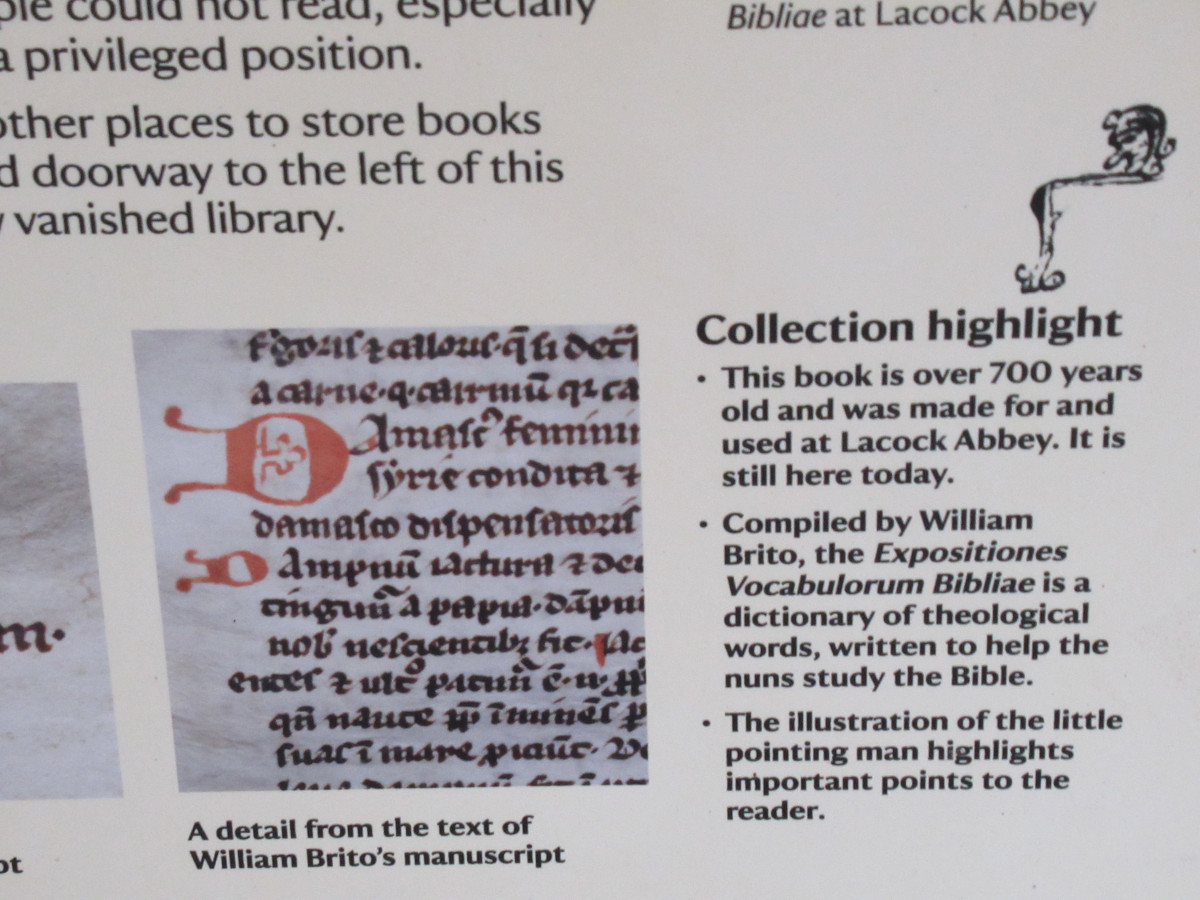


Information panels explain the life the nuns led. They wore white woollen tunics and cloaks, veils and wimples and slept on straw mattresses in dormitories. They woke at 3.00 am for the first of 8 daily services and made their way to the chapel by candlelight. In addition to private prayer, many nuns did manual labour or copied manuscripts in the scriptorium and they also read, sang and did embroidery. Until 1260 they were granted 1 cartload of wood per week, with which they heated just 2 rooms – the chaplain’s room and a ‘warming room’ for guests. After that, they were given 40 acres of forest so they could collect their own wood. But it must have been freezing nevertheless.
The Abbey was later inhabited by Talbot family, including William Henry Fox Talbot, known as the ‘father of modern photography’. You can visit the family home and also the Fox Talbot Photography Museum whose collection includes early cameras and photographs taken in the mid-19th century. There is more about this on the podcast.
lacock village
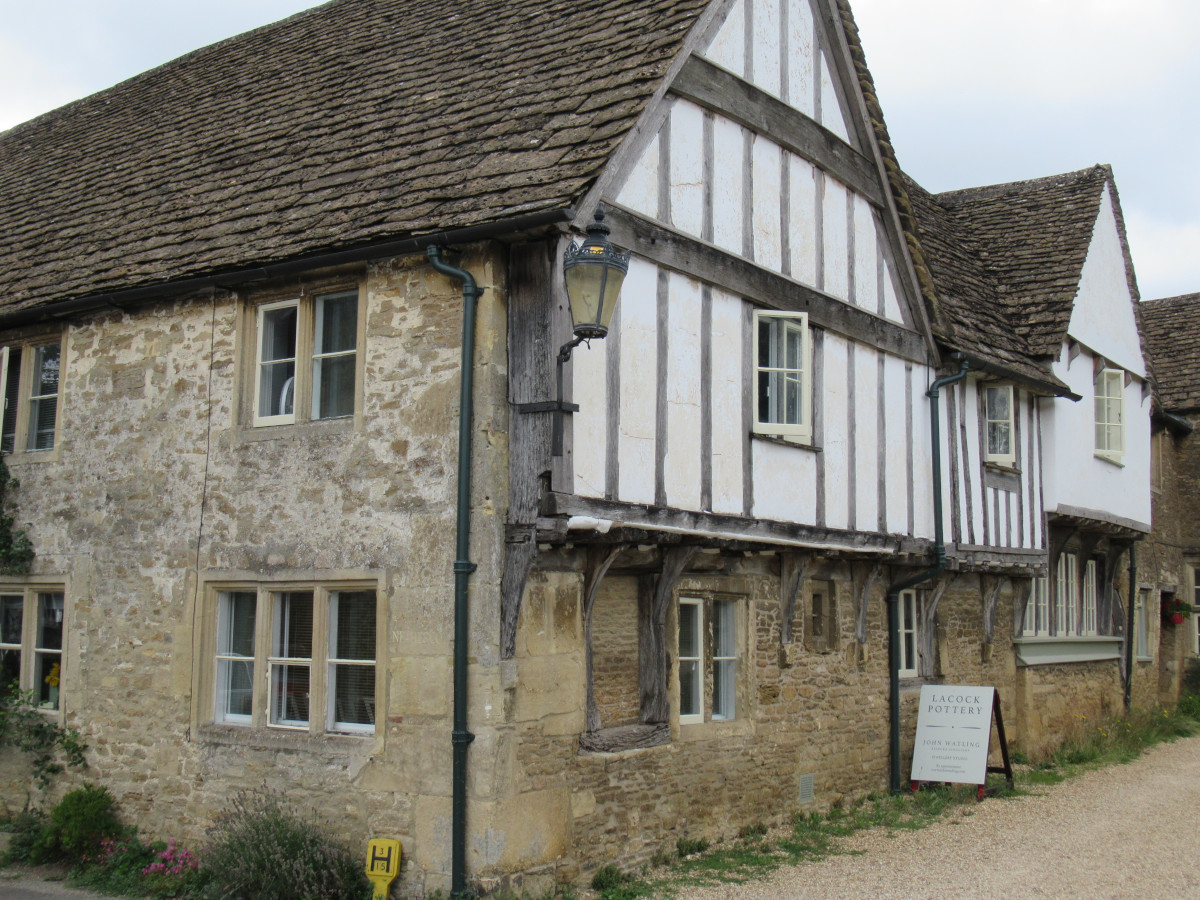
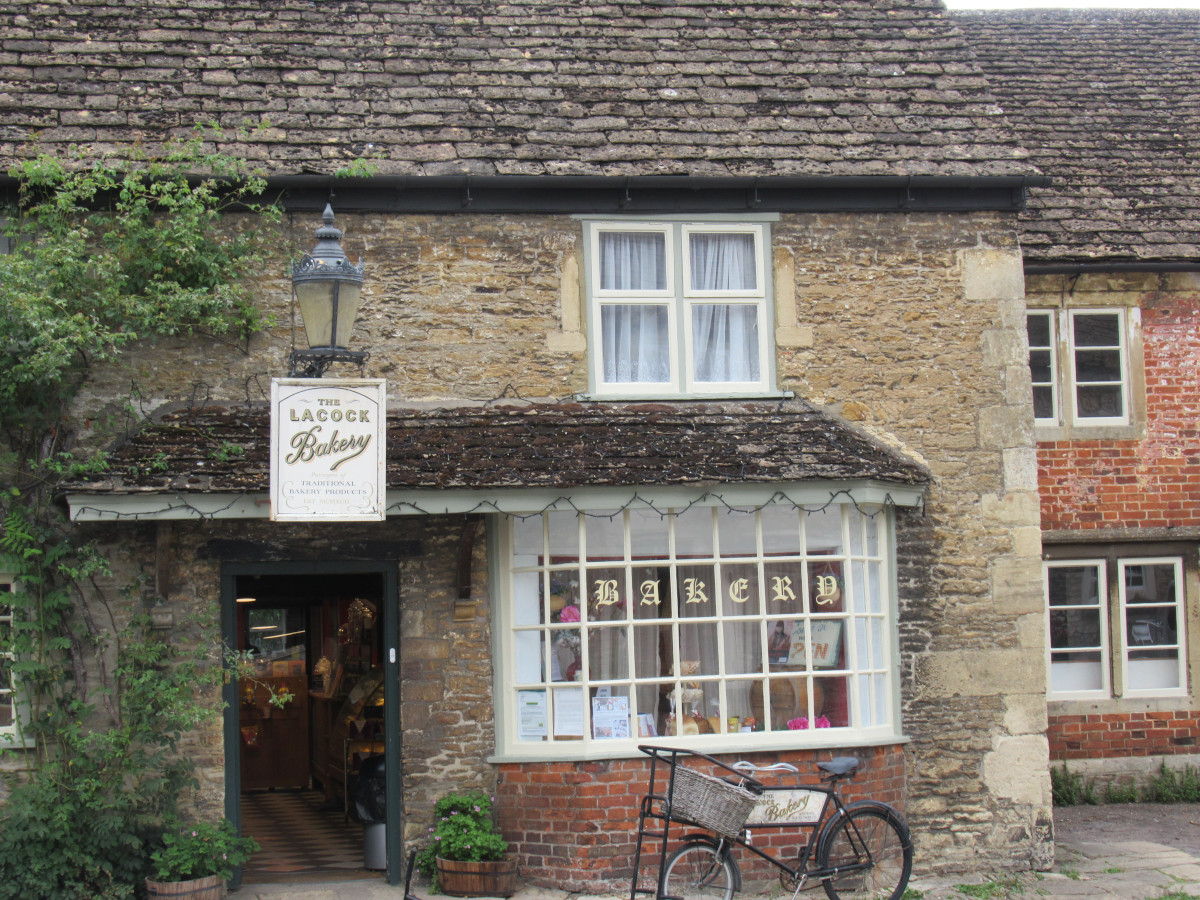
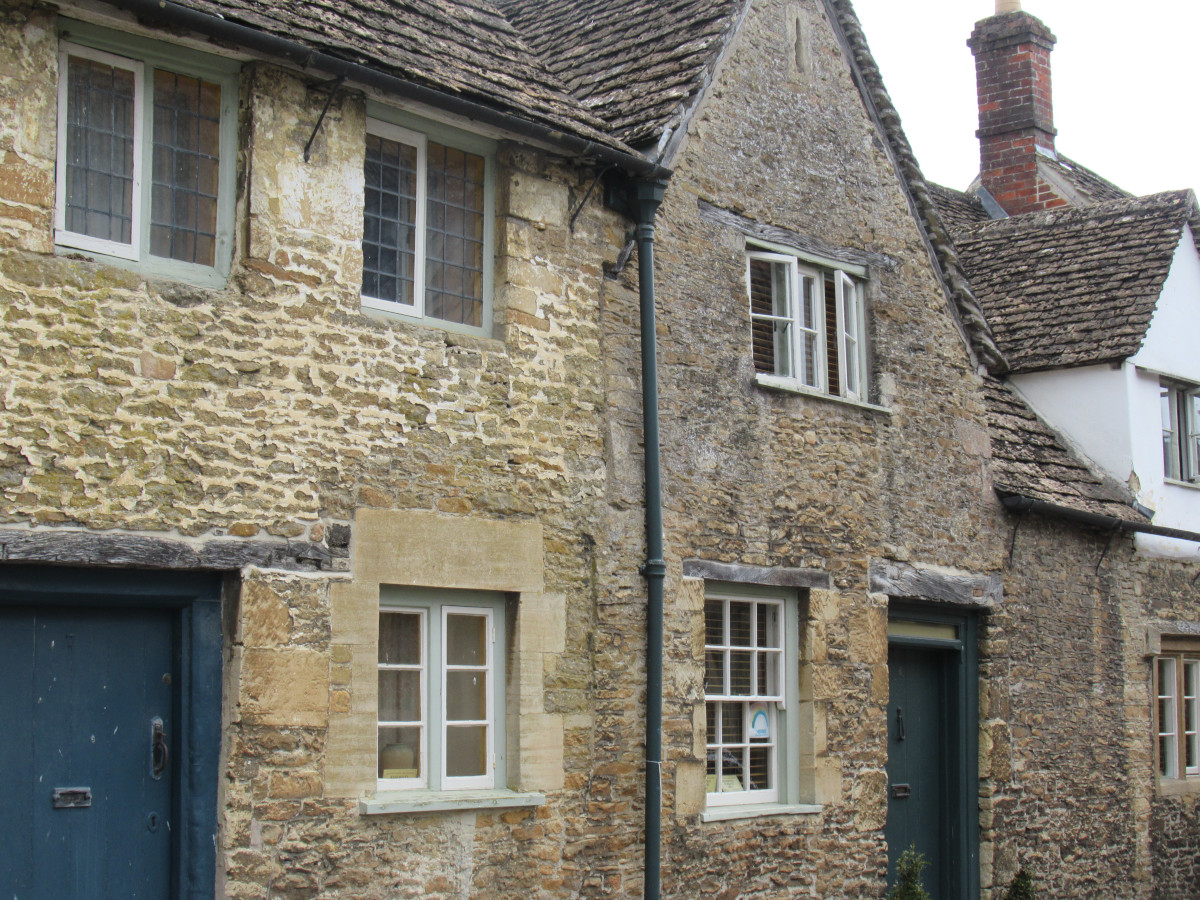
The tiny village of Lacock – really only 4 streets! – was mentioned in the Domesday Book of 1086. Owned by the Abbey, it became a thriving little community, living largely off its cloth trade. It flourished until the arrival of mechanical looms in the 1830s when poverty struck and many inhabitants ended up in the Poor House. It has barely changed for 200 years, making it an ideal place for filming and indeed it has been the set for many famous films including Wolf Hall, Jane Austen’s Pride and Prejudice (twice!) and Tess of the D’Urbervilles. Key scenes from the Harry Potter films were shot at the Abbey. It’s definitely worth a little detour to walk round the village.
You can download information on the Lacock Pleasure Garden Walk, which will take you a mile or so around the village with lovely views of the abbey. And there’s a wider choice of walks around Lacock here.
corsham
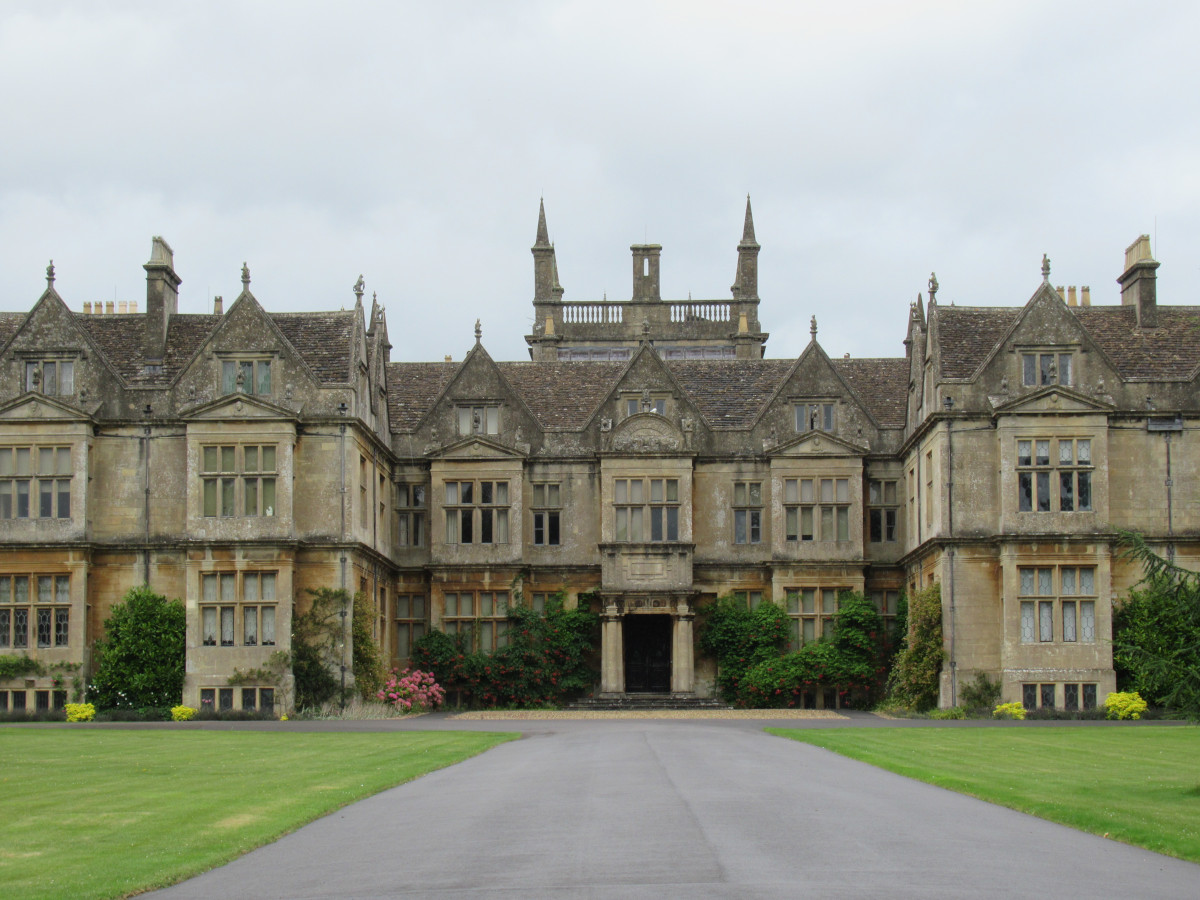

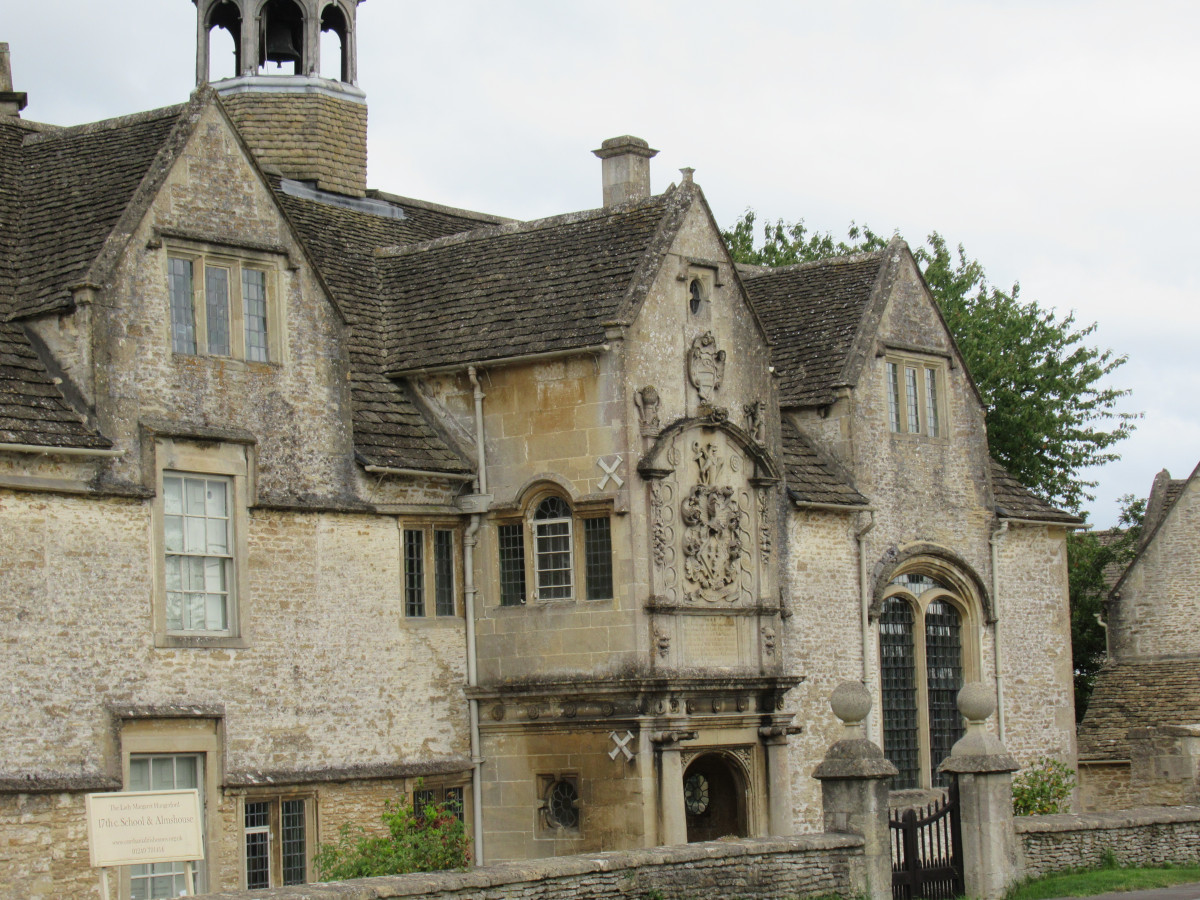
The Corsham Estate includes 5 farms, 100 houses and a number of offices and shops. The history of Corsham Court is given on the podcast, but it was mentioned as early as 978 as a ‘summer palace for the Kings of Wessex.’ Thomas Smythe built an Elizabethan Manor House on the site in 1582 and in the 18th century a member of the Methuen family had the house extensively enlarged and remodelled. Today it is privately owned, but you can book tours of part of the house, including its extensive art collection and visit the gardens which were landscaped in the 1760s by Capability Brown.
The Almshouses opened in 1665, funded ‘in perpetuity’ from the estate of Lady Margaret Hungerford, a wealthy widow. They provided homes for 6 people who might otherwise be homeless and Lady Margaret’s 45 Ordinances spelt out how life should be lived there: NO swearing, gambling, dicing, playing cards or drinking, residents must mend their own chimney, weed the garden and ‘tend to the common hedge’ which was used to dry washing. Church was compulsory on Sundays and daily prayers were said twice daily in the next door Schoolroom.
The Schoolroom was also funded by Lady Margaret, to provide an education ‘for ten needy scholars’. Built in 1688, it is virtually unaltered today, housing a Master’s Pulpit and the original 17th century pupils’ desks. The room was used for both lessons and church services. Opposite the pulpit is a gallery where Lady Hungerford sat when she attended prayers. You can visit both the Almshouse and the Schoolroom, which are usually open on Saturday afternoons in the summer. Check here for details.
Listen to the POdcast
Links for this post
Lacock Abbey
Fox Talbot Museum of Photography
Lacock Pleasure Garden Walk
Selection of Walks around Lacock
Corsham Court
Corsham Almshouse and Schoolroom
Previous Episode A Bath Anthology
Next Episode A Day out to Wells





